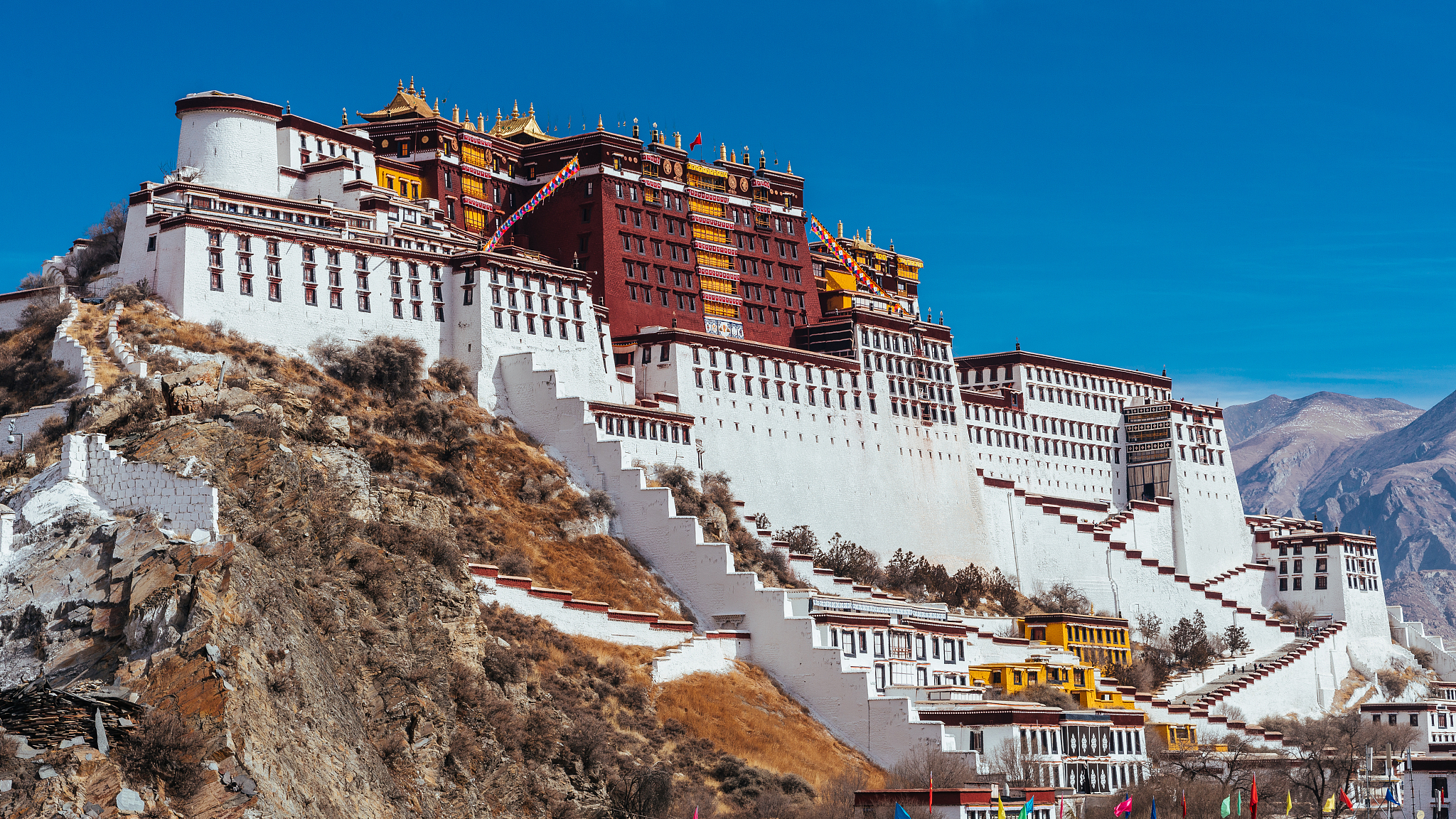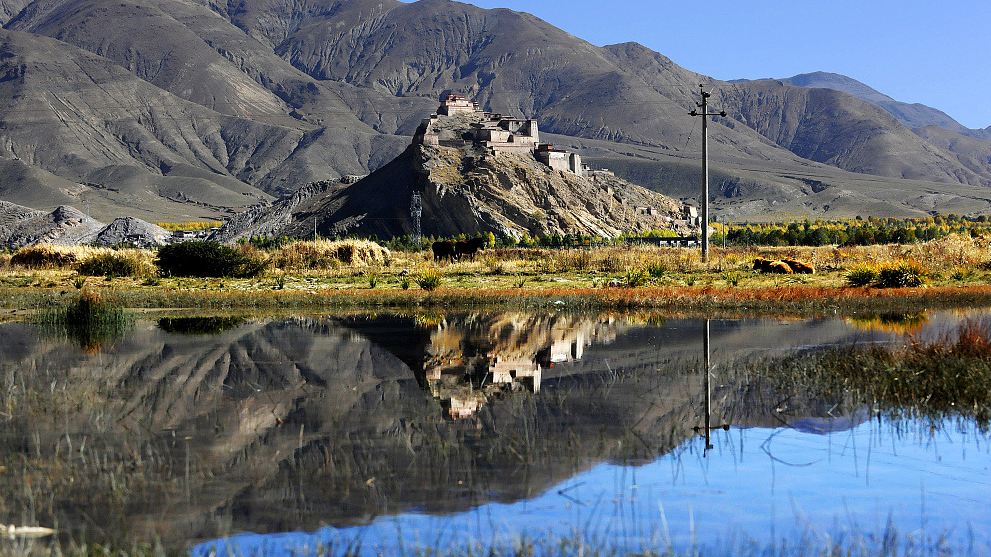
Editor's note: Xiao Jie is deputy director of the Institute of Contemporary Studies, China Tibetology Research Center. The article reflects the author's opinions and not necessarily the views of CGTN.
This year's May 23 marks the 70th anniversary of the peaceful liberation of Tibet. On May 23, 1951, the Agreement of the Central People's Government and the Local Government of Tibet on Measures for the Peaceful Liberation of Tibet, "17-Article Agreement" for short, was signed in Beijing, marking the peaceful liberation of Tibet and starting a completely new historic process for the advancement of Tibetan society. Peaceful liberation, a watershed to distinguish modern Tibet from the old one, has laid a significant foundation for the rapid development of Tibet from different perspectives.
First, the peaceful liberation has solved the problem of sovereignty in Tibet and maintained national unification. A unified political entity is indispensable for its underdeveloped part to develop since a sustainable payment transfer system, unified market and developmental policy are all available.
Before 1951, due to the imperialist invasion and incitement, China's sovereignty in Tibet met with several challenges given the existence of foreign privilege and a group of pro-independence elites within the local government.
After signing the "17-Article Agreement," the central government of China re-established its sovereignty in Tibet, with the reestablishment of government bodies to help ordinary people in Tibet.
Since then, national unification has become a solid political foundation and ideological consensus in Tibet, based on which central government of China. Other provinces and municipalities also provide a large quantity of selfless support to Tibet.
The peaceful liberation has also started a grand process of social system transformation in Tibet. It is no longer a theocratic feudal serfdom society governed by a theocratic authority, in which the upper classes heavily exploited ordinary people.
The peaceful liberation, along with the subsequent democratic reform in 1959, ended the hundreds of years old feudal serfdom and theocracy in Tibet and established a completely new people's democracy, granting ordinary people the power to control their own lives.
Within the people's democratic system, ordinary people in Tibet elect their representatives in the National People's Congress and local people's congress members at various levels to manage the political, economic and social affairs for them. True democracy has comprehensively changed the fate of people and provided basic political dynamics to guarantee and improve human rights in Tibet.
Moreover, the peaceful liberation has made clear the path of ethnic, regional autonomy in Tibet. Ethnic, regional autonomy is a unique political system for governance of ethnic regions in China, combining national unification with local autonomy and ethnic factors with regional factors.
The "17-Article Agreement" clearly states that "in accordance with the policy toward ethnic groups laid down in the Common Program of the CPPCC (Chinese People's Political Consultative Conference), the Tibetan people have the right to exercise national and regional autonomy under the unified leadership of the Central People's Government," paving the way for the establishment of ethnic, regional autonomy in Tibet.
The Preparatory Committee of Tibet Autonomous Region was set up in 1956. Nine years later, the Tibet Autonomous Region was formally founded in 1965, marking the final establishment of ethnic, regional autonomy in Tibet.
During the past 70 years after peaceful liberation, Tibet has realized tremendous progress in every aspect, which has been comprehensively described in the white paper released by China's State Council Information Office on May 21. There are several keywords that can help us understand the white paper better.

Scenery of Lhasa City, capital of Tibet Autonomous Region, southwest China. /VCG
Scenery of Lhasa City, capital of Tibet Autonomous Region, southwest China. /VCG
The first keywords are "targeted poverty alleviation." Since the 18th national congress of the Communist Party of China (CPC), the Chinese government has invested a lot to fight against poverty and solved the problem of absolute poverty for the first time in the history of Tibet.
Tibet was a contiguous poor area with the highest incidence and most severe level of poverty, where the cost of poverty eradication was highest and the difficulty greatest. With the support of the Chinese central government and partnership assistance from other parts of the country and targeted poverty alleviation policies and measures, Tibet has won a decisive victory over extreme poverty.
By the end of 2019, all the 628,000 registered poor and 74 designated poor counties in Tibet had risen from extreme poverty, which is a landmark success in human history, especially in a high plateau with a severe natural environment.
The second keywords are "ethnic solidarity." Exchange, communication and integration among different ethnic groups have always been a tradition of China since ancient times and the basic tone of the Chinese government's ethnic policies.
To enhance ethnic equality and solidarity, the current Chinese government is deeply devoted to consolidating the consciousness of the Chinese national community.
The Tibet Autonomous Region has profoundly promoted ethnic unity and progress via activities such as themed education on the Chinese dream and patriotism. Tibetan students and workers are encouraged to find jobs and start businesses anywhere in the rest of China. Nowadays, ethnic unity has been promoted to the largest extent in Tibet.
The third keywords are "ecological construction." As an important guarantor of China's environmental security, the environmental protection of Tibet has attracted great attention not only from people in China but also from other countries around the world.
The Chinese government has attached tremendous importance to environmental protection and construction in Tibet. Coordinated progress has been made in maintaining and improving the environment, and various governments have done a lot to build a green development model. Tibet's ecosystems are now generally stable, and Tibet has become one of the regions with the best ecological environment in the world.
Therefore, we can say that there is a completely new Tibet compared with the one that existed before 1951.
(If you want to contribute and have specific expertise, please contact us at opinions@cgtn.com.)

